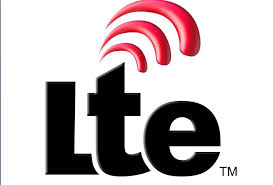
Now that LTE Broadcast is off the ground following the world’s first session on a commercial LTE network transmitted by Australian operator Telstra, attention has naturally turned to potential use cases and revenue generating opportunities. The initial attraction for cellular operators, once they have a sufficiently widespread LTE network in the target region, is the significant bandwidth saving they will get when streaming popular live video, with the consequent ability to optimise capacity and improve service quality for customers, especially in crowded areas. That is a business rather than a specific use case, but at least one major operator is planning to come out with all guns blazing with the latter from day one.
Verizon Wireless has already confirmed it intends to time its 2014 launch of LTE Broadcast in the US to coincide with one of the nation’s iconic sporting events to use the technology for streaming video in the stadium. This event is now widely believed to be SuperBowl, the annual championship of the US National Football League, to be held in New York on Sunday February 2nd 2014. This could be a big day for establishing LTE Broadcast’s most widely touted use case for broadcasting coverage, replays and associated video around sporting or music events where there are large numbers of people concentrated into a venue or arena. Without LTE Broadcast such content has to be unicast, which would cripple a cell and leave many users unable to access the service, while also causing congestion on the associated backhaul networks.
For operators this use case, live event streaming, offers potential both for cost savings by reducing or avoiding need for network expansion and also for generating revenue in various ways, for example subscriptions, pay per view, pay per event, a seasonal pass, or revenue sharing with content partners. Apart from live event streaming, other interesting use cases are on the horizon under five broad categories: real time video streaming across the whole network, news services, broadcast radio, off peak media delivery and cell based advertising. Real time streaming again offers revenue sharing opportunities, most likely with broadcasters or pay TV operators as the mobile part of their TV Everywhere strategies, perhaps combined with Wi-Fi hot spots. Already Verizon Wireless is in talks with US cable operators along these lines. Then for news services, LTE Broadcast has the potential to extend the scope of existing offerings by delivering news and sport as live updates or clips. There is the option of combining these with personalized lower bandwidth unicast services, such as specific stock updates.
These news services could be given away free as part of a premium offering to extract higher subscriptions, or could be advertising driven. The broadcast radio category is also creating some interest as a way of saving unicast capacity while again creating scope for upselling to premium packages and carrying advertising, as well as revenue sharing with providers of content such as music. Then the off peak delivery use case brings a range of opportunities, especially perhaps for tablets as they have greater storage capability, turning them into mobile DVRs (Digital Video Recorders). TV shows, movies, YouTube videos and newspapers could all be drip fed to devices this way, as could software updates. Apart from saving bandwidth this has pay per view opportunities as well as revenue sharing. Finally cell based advertising can be used to deliver ads targeted on the basis of location rather than personal preferences, with live events themselves being an obvious case, but also shopping malls and airports where particular retail outlets or restaurants might want to advertise to mobile users while in that vicinity.
This can be achieved by partitioning LTE Broadcast on a cell by cell basis, so that separate content would be sent to each cell. Most of these use cases are unlikely to be deployed in the immediate future as they will have to wait for widespread availability of devices compatible with LTE Broadcast, which will not be until well into 2015 at least. Meanwhile though some questions are arising, such as how LTE Broadcast will affect Wi-Fi expansion.
There has been interest in Wi-Fi broadcast as well for live events, with Cisco already offering this with its StadiumVision mobile app, which users can download at venues to access event specific broadcast streams over Wi-Fi. This could well compete with LTE Broadcast for live events streaming, but that is another story. Part one in this series is here and part three is here.
